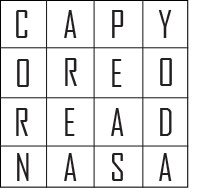Beyond the Screen: Exploring the Impact of Visual Media on Our Lives
December 18, 2015
When we were kids, the things that appealed most to us had to meet simple requirements: They had to be brightly colored, they had to be shiny and they had to be interesting enough for us to drop whatever had been holding our attention (quite literally) and make our way over to the new thing. Most of the time, this intrigue lasted all of about 60 seconds before another thing came along to steal our attention, and so began the process all over again.
For a 2-year-old, this might have been a yellow plastic duck, but over a decade later, these requirements haven’t really been dismissed — they’ve only evolved. The things that catch our eyes today still have to be vivid, have some degree of luster and, more than anything, they have to be relevant. We’ve grown up and now we care about more important things: work, grades, our social lives and eventually college; we don’t care about yellow ducks anymore.
Visuals have methods behind them, whether they are meant to entertain or inform people. Those who create visuals make sure that our judgments aren’t our own at all — they’re exactly what the article, magazine, or advertisement wants them to be. Visuals that we believe exist only for the purpose of entertaining us can have hidden agendas and convey ideas that shape the way we think.
Yet, sometimes visuals are misinterpreted in the eyes of the viewers. We often assume that what we see is reality, and something as simple as a filtered Instagram photo is put on a pedestal and glorified as the way our lives should look. At this point, visuals that are actually designed with the sole purpose of entertaining become misleading.
Things are in constant competition with everything else for our attention, and ever since that yellow duck caught our eyes over a decade ago, we’ve been trained to look for the next great thing to fascinate us.
So, bold headlines have become our friends, because anything that IS WRITTEN LIKE THIS must be important. Vibrant-colored pictures are used to bring dull stories to life, because a series of sentences printed in black in white is so boring and not worth our time. Statistics and graphs have been blown up for easier reading, because if fractions of our entire academic careers have been dedicated to teaching us the value of a number then they must mean something to us.
In this spread, The Talon takes an inside look at what goes on behind the scenes of creating entertaining and informational visuals and how these pictures shape the way we see the world.
Great minds think alike. Are you one?

Entertaining Visuals
In this fast-paced world, people and industries are using visuals as a way to communicate emotionally compelling ideas for their entertainment value. Visual media catches our eye when we open any modern social media platform, and it is a crucial part of our entertainment intake and social lives.
The influence of modern visuals is becoming greater with social media sites such as Instagram, Snapchat, YouTube, Pinterest and Facebook, some of the most widely consumed idea and information sharing platforms. Providing alternatives to traditional visual entertainment on magazines, TVs and in movie theaters, the rise of the internet, along with increased photo and video sharing, has pushed the production and consumption of visuals to much higher levels. Social media increases dialogue and personal communication and these aspects are what modern-day entertainment looks like to the public.
This change can clearly be seen today in two areas: mass advertising and individual media sharing.
Corporations employ entertainment-based visuals in advertising to catch attention, and many websites, whose business models rely on getting views, use visuals to create reactions and intrigue audiences. Communication serves a primary role in reaching out to audiences and creating a need for a certain product or piquing interest.
Nike’s image-based marketing campaign is a good example of the advertising industry’s need for visuals to inspire purchases. Instead of using paragraphs and logic to explain the values of their products, Nike illustrates action and usability in images, displaying aesthetics in their products that cannot be conveyed through text. Customers are also attracted more by these graphics because rather than being told why they should buy Nike, they are shown why they should buy Nike.
These advertisements use visuals as the primary sources of information for its audience, supplemented with catch-phrases and its famous logo which are ultimately much more eye-catching and persuasive than any amount of text Nike could provide to potential buyers. To communicate with larger audiences, Nike and many other companies are advertising through social media — in Twitter feeds and Facebook posts. With society’s online presence increasing, social media is a powerful tool for these companies to push their brand names. Company logos become imprinted in consumers’ memories simply due to their frequent appearance on major social networking sites.
Social media has also become a powerful communication tool for the average individual, too. According to The Social Times, as of June 9, Snapchat users shared 8,796 photos per second, and Facebook users shared 4,501 photos per second. Images speak louder than words and also allow people to entertain others on a highly personal level.
With our phones and media surrounding us all the time, we can easily snap a photo of something interesting and upload it. These photos represent a larger truth, a moment frozen in time and transmittable to share with friends and family.
For larger media presences such as celebrities, social media uploads entertain masses of fans with doses of celebrities’ whereabouts and actions. Many fans hunger for more knowledge of their favorite celebrity, and platforms such as Instagram allow celebrities to provide those fans with exactly that.
As in journalism, there is a huge element of production and selection that goes on behind the scenes of both corporate and consumer-generated entertainment. In many cases, this careful selection and representation of only the author’s intended emotional effect is forgotten and people take what they see as reality. We should be aware of this method and make sure we are truly spending time to evaluate the content we are consuming for enjoyment.
Informative Visuals
Many of us, in response to the question of how we learn best, would probably say that visual learning plays an immense role in how we understand concepts, ideas and definitions. Be it in the form of a graphic or image, visuals can serve as some of the most powerful and accessible informational vessels, and the power they have in accentuating our ability to learn is vast.
“Illustrations, charts, diagrams and photos can often explain more than words,” Dee Dickinson of the Johns Hopkins School of Education said. “They make abstract ideas more concrete and understandable; they make information memorable; and they can facilitate learning.”
According to the Social Science Research Network, 65 percent of all people are visual learners. They process best when given an image to relate to and absorb information more quickly when given a perceptible display.
Thanks to the rapid growth of social media, people are spending more and more time focusing on their electronic screens and the ever-growing collection of memes, graphics and Instagram posts. More and more people are able to share their voices and opinions using visuals, as the technology to create and share images becomes more accessible.
In journalism, visuals are often used for their eye-catching appeal. Chunks of text are not only intimidating to the human eye and mind, but also lack any true visual stimulation and can therefore turn off the reader.
However, one of the most overlooked aspects of visual journalism is that there is always a limitation to what is represented. When a photographer snaps a photo of a catastrophic event, viewers only see what the lens can cover. When a graphic artist chooses which statistics to incorporate into their visual to create the most compelling message, viewers only see that specific perspective on the issue. It’s important to keep in mind that there are always more perspectives than what’s being represented.
While visuals were initially seen as additives to the text of the article, they have now grown to be almost as or even as influential as articles themselves. Take TIME Magazine. The popular publication holds competitions for “photographs of the year” and also emphasizes photographs, as well as articles, as a crucial part of its works.
With the rapid growth of technology, graphic design has also seen a hike in popularity as a career option. Artists now have the chance to pursue it as a major, channeling not only their artistic ambition, but connecting that ambition with the new age of technological advancement.
At the hand of a skilled graphic artist, a paragraph of text littered with statistics, percentages and complicated data can be replaced with a meaningful and visually captivating representation of the author’s message.
In journalism, visuals represent a snapshot. While they attempt to encompass entire ideas and convey and communicate, they can only do so within a range of available voices. Informative visuals can shed light on situations in ways that can truly connect with viewers and readers everywhere, and simultaneously, audiences should always seek more interpretations to ensure they have truly seen the whole picture.






